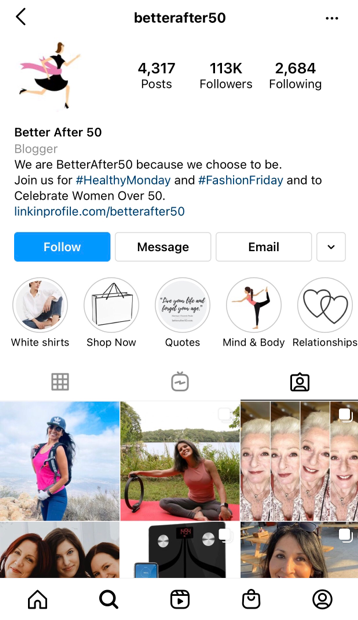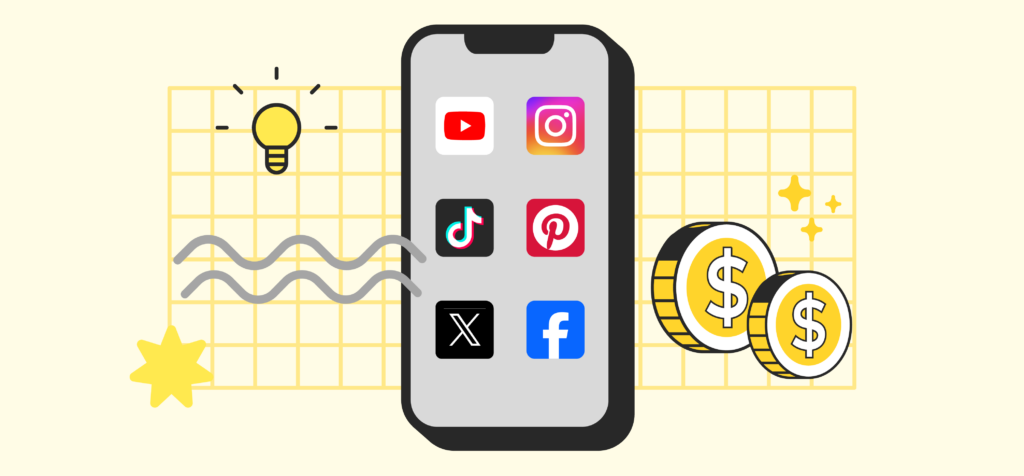Social media has forever changed the way we interact online. It has revolutionized the way we discover and consume content — and the way we shop. In fact, research shows that social media influences more than 70% of consumer buying decisions.
While brands still use social media to market directly to consumers, social media influencers have become an important strategic partner across almost every sector. Influencers are uniquely positioned to close the loop between a brand and potential buyers, because they bring a tremendous amount of their own brand power to the table — as well as a loyal and highly targeted audience.
If you’re a content creator (also called a “publisher”), you probably already operate social media accounts across several channels, to drive traffic and engagement among your readers. Those same channels provide a valuable opportunity to grow your revenue through affiliate marketing.
Every touchpoint is an opportunity
Today’s most successful publishers are seen as trusted, knowledgeable sources of information. They develop a close relationship with their audience, and social media channels are the perfect vehicle for monetizing that engagement.
Adding affiliate marketing to your social strategy is just as easy as building commerce-driven content on a website, if not more so. Any channel that allows you to include a monetized link in a post, description, or profile is an opportunity to earn — especially if you already have a highly engaged audience. Affiliate links can be:
- Shared in Tweets
- Posted to Facebook pages or groups
- Added to YouTube video descriptions
- Included in your Instagram profile
- Embedded in pins on Pinterest
- And so much more!
Sharing affiliate links on social media gives you the opportunity to supplement any sponsored content or other direct brand deals you may have in place. And you don’t need millions of subscribers to make affiliate links worthwhile. If you get your affiliate marketing strategy in place from the start, you’ll see your earnings grow along with your subscriber base.
Getting started with affiliate links on social media
The possibilities are endless when it comes to affiliate links in social media. But sometimes it helps to have specific examples of how it’s done. Following are some tips for getting started with two of the most popular channels for affiliate links: YouTube and Twitter.
1. Youtube video descriptions:
Shopable product reviews, product recommendations, and product launch videos are a great place to get started with affiliate links on YouTube. Start by including an affiliate link (or several affiliate links) in each video description. Here’s an example of a YouTube channel, The Sole Brothers, sharing monetized links in a video review of basketball shoes:

This video description is doing everything right with their affiliate links. The links are clear and prominent, and they’re placed “above the fold” — so they’re visible even before the description is expanded (see below). In addition, it’s clear from each CTA that you can buy the product directly using the link.

2. Tweets
X (Formerly Twitter) is a unique channel, in that it provides access to a fast-paced environment where you can build a focused audience that will voraciously consume the content you publish. The important thing to remember is to remain on-brand and stay authentic to your audience, while still providing value.
Product launches are a great opportunity to include affiliate links in your Tweets. Content tied to a product launch is inherently promotional, so dropping in an affiliate link seems natural. As you continue to build affiliate links into your social strategy, your followers will start to see you as an authority in that space — increasing your opportunities to earn.
Just remember — X is meant to be conversational, so only include affiliate links where it actually makes sense, or you risk alienating your followers.
3. Instagram
Instagram boasts more than one billion users per month, and 81% of people use Instagram to research products and services. With numbers like that, Instagram is a natural choice for affiliate marketing — and there are countless ways for publishers to generate revenue on this popular platform.
Lifestyle and inspiration blogger Better After 50 takes an easy approach, by simply including a permanent link to her website in her Instagram bio. Many of her blog posts include affiliate links for fashion and wellness products, and her site also features a curated shopping section.
Other publishers prefer to include URLs and promo codes in the comments of each post, or utilize Instagram Stories to highlight a particular brand or product. Instagram has also released tons of new features that make it easier for publishers to monetize their traffic, including shopable posts, live shopping, and new tracking and analytics functionality.

Ready to start earning with affiliate marketing?
While affiliate marketing is simple and accessible, getting started can be daunting. And even if you’re already making money through affiliate marketing, you may be looking for new ideas and ways to enhance your strategy.
In this blog series, we’re digging into the various ways you can capitalize on affiliate marketing and monetize your high-quality content, including:
We’ll also share some important tips for building your affiliate marketing strategy and optimizing your earnings.
👉 Pro tip: Download our free Sovrn Guide to Affiliate Marketing to find more helpful tips and tricks to maximize your affiliate revenue. You can also visit our website to learn more about Sovrn Commerce, the fastest and easiest way to start earning through affiliate marketing.

